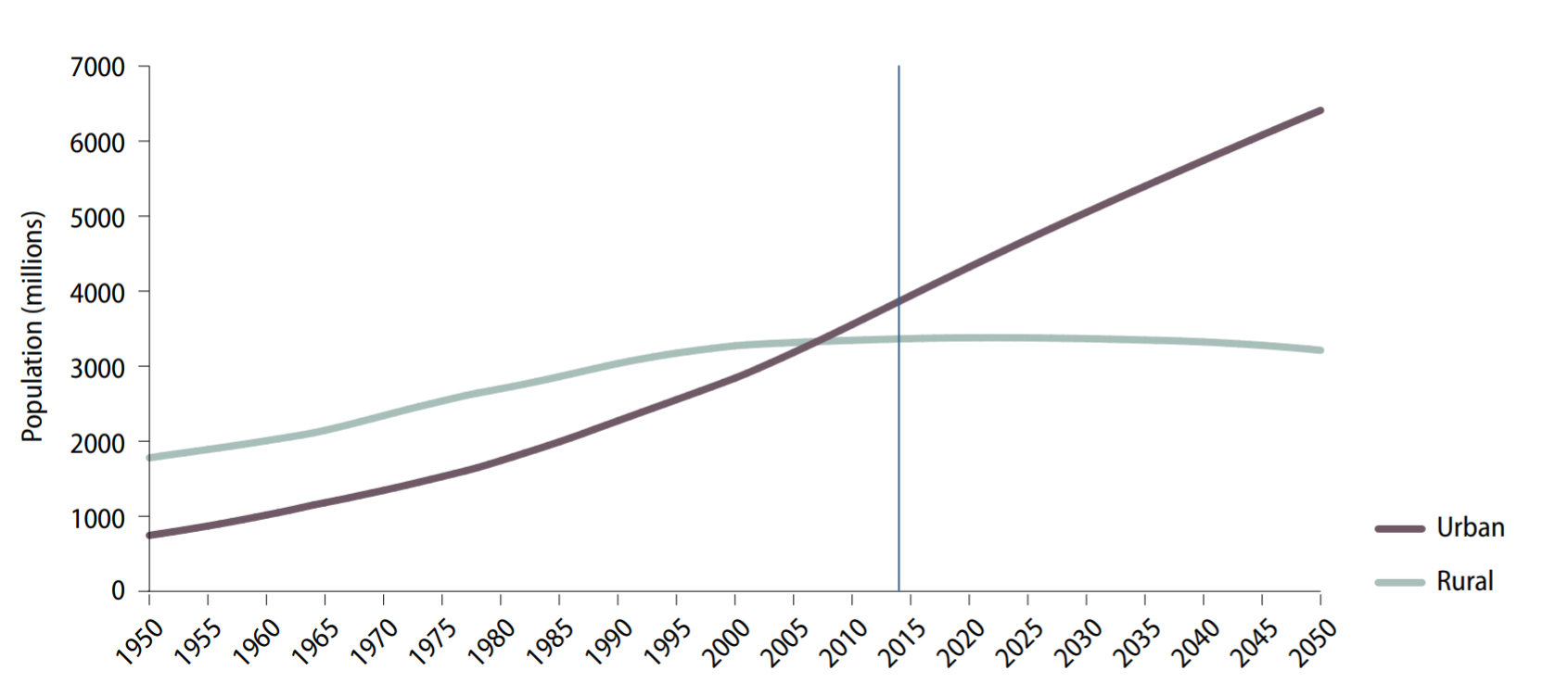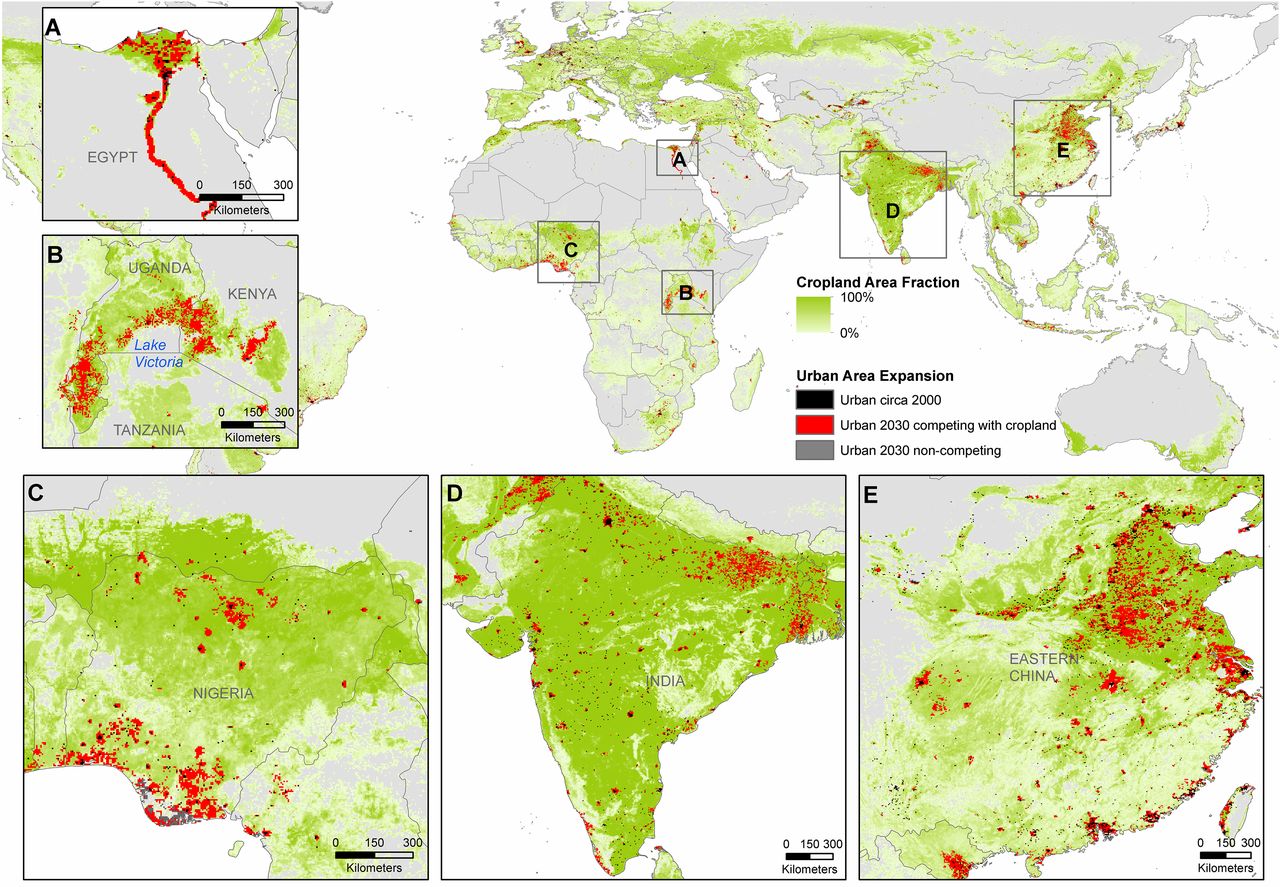Note: this article first appeared in Global AgInvesting on March 21, 2019 globalaginvesting.com. This is the first article of a series published by GAI News. The eight-part series will examine how the global food system is set to be altered by eight existing trends.
Primary author: Jeremy Stroud, Bonnefield, Agricultural Investment Analyst
Contributing authors: Michael DeSa, AGD Consulting and Solomon Tiruneh, AGD Consulting
It is no secret that our global food system is in a state of flux. In the next century, we will be challenged to produce more food with less land, by fewer farmers, and with increasingly scarce water resources. Although evidence suggests that we as humans have the capacity to achieve this, it is imperative to explore what changes can be expected from the planet’s climatic and demographic variability. The purpose of this article series is to provide insight on these changes and place a spotlight on the regions which may weather the change most effectively. While other parts of the world are projected to experience comparatively strenuous conditions, parts of the Canadian and U.S. agricultural systems are positioned to endure and even prosper in the face of a changing climate and demographic.
A combination of industry and academic literature indicates eight existing trends that are set to alter the structure of our global food system. A growing body of data indicates that these factors may determine our collective success or failure:
1. Urban expansion
2. Land erosion and degradation
3. Fresh water scarcity and agriculture’s reliance on irrigation
4. Increasing temperatures and CO2 levels
5. Volatility of weather systems
6. Global phosphate over-use
7. Bee fatalities and pollination
8. Population growth in proportion to arable land
As with any changing market, structural movements can lead to inefficiencies which are then corrected by the activities of market participants. In this case the global agri-food sector could face extensive resource constraints and shifts in pools of capital over the next half century. This may establish the environment for public and private entities to create efficiencies by allocating capital to new infrastructure projects, accessible financing alternatives, synergistic consolidation, progressive policies, and industry-led innovation.
Let’s start with a topic that is close to many of our homes – urban expansion:
Urban Expansion
It is a modern reality that some of the world’s most fertile soil is now beneath several layers of concrete. Cities were originally established based on their proximity to agriculturally productive land and its strategic significance. As economies continue to shift from rural to urban residency, the world’s major cities naturally expand outwards. Unless geographic or regulatory restrictions exist, cities extend by developing into farmland areas that had historically been the source of their nourishment. Currently, populations in developing economies are urbanizing at a rapid pace with 40 percent of urbanization taking place in developing slums – a trend that is expected to heighten regional socio-economic disparities and sanitary-access concerns. The global urban population is set to increase by 2.5 billion people by 2050, with India, China, and Nigeria accounting for nearly 900 million additional people. Figure 1 highlights the global shift in urban vs. rural populations.

Figure 1: Urban vs. Rural Dwelling Projection, 1950 – 2050
Source: United Nations, World Urbanization Prospects – 2018 Revision
Urban expansion is projected to reduce our global cropland area by 47 million acres between 2015 – 2030, and it is taking place on cropland that is 77 percent more productive than average. This is an especially concerning issue in the developing world where population growth will expand at the highest rate throughout ‘mega-urban’ areas. Nearly 90 percent of the world’s cropland loss due to urban expansion will take place in Asia and Africa. Figure 2 exhibits the fertile areas which will be hit hardest by urban expansion.

Figure 2: Urban Expansion Projection Map, Circa 2030
Source: Proceedings of the National Academy of Sciences, 2016
Crop growing regions are affected by urbanization to a far lesser extent in countries with dispersed population centers, an abundance of land resources, and proactive land-use regulations, such as in Canada, the U.S., and Australia. In Canada, for example, the Golden Horseshoe Greenbelt and Agricultural Land Reserve Acts collectively protect more than 13 million acres of productive farmland. Although it may make immediate economic sense for cities to develop outwards instead of upwards, natural geographic barriers to urban expansion have contributed to some of the most prosperous and concentrated cities on the planet, such as New York and Singapore. Increased urban density (whether a consequence of necessity or planning) has also been correlated to increased productivity and wages due to the cost savings derived from urban agglomeration.
Urban Expansion and Agricultural Investing
With the emergence of concerns relating to urban expansion and its effects on agriculture, our minds naturally lean towards the merits of indoor farming as a solution to farmland loss. While urban and greenhouse farming projects have developed rapidly due to recent technological advancements and access to venture capital funding, the types of foods grown in enclosed settings are typically exclusive of the grains, oilseeds, pulses, field vegetables, and permanent crops grown on farms. The future of our food system will likely consist of a complementary combination of climate-controlled indoor and traditional outdoor farming methods rather than a slant towards just one. Investments on both sides of the agricultural production spectrum are expected to generate similar risk-adjusted returns over the long term, albeit with differing levels of volatility, asset capital appreciation, cash flows, operational risks, and sensitivity to commodity price fluctuations.
Within the context of global urbanization, farmland located on the perimeter of a growing city will typically command price premiums for development potential. This land is no longer valued for its productive agricultural capacity and would be considered a different investment class altogether. Some of the safest and most fundamentally-sound agricultural investments available are located in close enough proximity to supply growing cities with fresh food, yet far enough away not to have development premiums. These assets naturally lend themselves to the pursuit of sustainable development goals through farmland protection and their function in nourishing a demand-oriented market. Further, they retain logistical and shelf-life efficiency, particularly for direct-to-eat goods. An investment of this type also may be optimized and expanded in the long term to increase economies of scale and capacity for production of different crop types.
As productive crop growing land becomes increasingly scarce over the next century, the significance of fertile land assets have every reason to flourish.
ENDNOTES
1 United Nations Water Facts, 2018
2 Proceedings of the National Academy of Sciences, 2016
3 Proceedings of the National Academy of Sciences, 2017
4 Journal of Agricultural Studies, 2014
5 Journal of Sustainability: Science, Practice, and Policy, 2017
REFERENCES
United Nations (2018). World Water Development Report, Nature-based Solutions for Water. http://www.unwater.org/publications/world-water-development-report-2018/
D’Amour et al. (2016). Proceedings of the National Academy of Sciences. Future urban land expansion and implications for global croplands. https://www.pnas.org/content/114/34/8939
United Nations (2018). World Urbanization Prospects, 2018 Revision.
https://population.un.org/wup/
Güneralp et al. (2017). Proceedings of the National Academy of Sciences. Global scenarios of urban density and its impacts on building energy use through 2050. https://www.pnas.org/content/early/2017/01/03/1606035114
Banerjee & Adenaeuer (2014). Journal of Agricultural Studies, MacroThink Institute. The Economics of Vertical Farming. http://www.macrothink.org/journal/index.php/jas/article/view/4526
Benke & Tomkins (2018). Journal of Sustainability: Science, Practice, and Policy. Future food-production systems: vertical farming and controlled-environment agriculture.
https://www.tandfonline.com/doi/full/10.1080/15487733.2017.1394054
